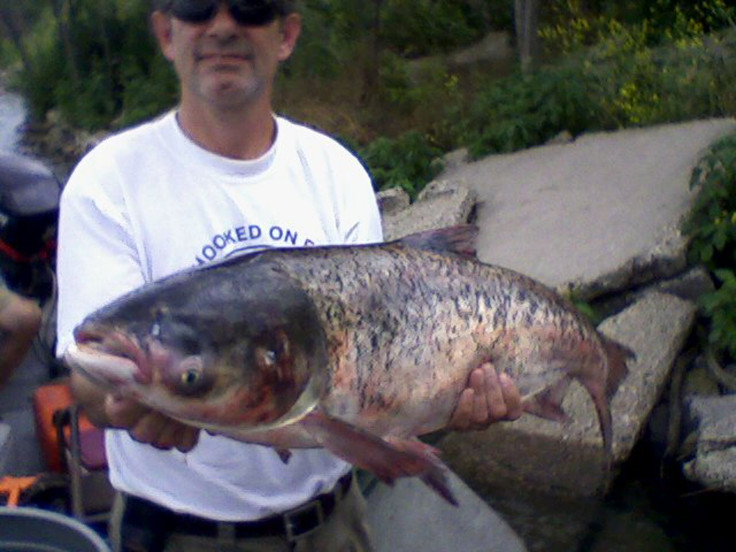Chicago Plans $18 Billion Defense Against Invasive Asian Carp After Reports Of 'Dangerous' Attacks On Boaters

The city of Chicago is considering several plans to keep an invasive species of fish from overrunning the Great Lakes, including spending $18 billion to shore up Chicago’s canal system. The measure comes on the heels of several reports of Asian carp, a fish that can grow to be more than a yard long, jumping out of the water and bludgeoning boaters along the Mississippi River Basin.
“The fish have battered boaters, making rivers unsafe for water recreation,” notes the National Wildlife Federation, the U.S.’s largest conservation organization. The group is at the forefront of the effort to keep Asian carp from reaching the Great Lakes. They say separating the Great Lakes from the Mississippi River Basin waterways is crucial to protecting the lakes from an Asian carp incursion.
Asian carp, which are native to Eastern Europe and Western Asia, were introduced into the U.S. in the early 1970s. The carp were used in fish farms in the south as an eco-friendly and chemical-free way to keep catfish ponds clean.
But the plan backfired when the carp entered public waterways, where their populations exploded. The invasive species now occupies open waters in 23 states, the National Wildlife Federation reports, and threatens to displace other native fish populations, including bass. In some rivers, Asian carp represent more than 97 percent of the biomass in those waters.
Furthermore, the fish pose a threat to local fisherman and boaters, who say the fish are a nuisance and even unsafe.
“It’s simply one of the most dangerous things that we’re doing, so we have to protect ourselves,” Kevin Irons, a specialist at the Illinois Natural History Survey Station -- a research institution that maintains a collection of more than 6 million aquatic and marine specimens from around the world -- said in a statement. “We can’t have a fish jumping on the throttle or a fish knocking somebody out.”
The survey station installed netting around the steering wheels and dashboards of its fishing boats to keep leaping Asian carp from damaging their equipment.
Experts fear that the Asian carp, which can eat 20 percent of its body weight in plankton every day, will wreak havoc on the Great Lakes’ fishing and tourism industry. The lakes provide drinking water for 25 million people, support a $7 billion fishery and are an integral part of North America’s economic and cultural legacy.
"This is not a Chicago problem, an Illinois problem, or a regional problem. It is a national issue, that will require appropriate resources for a solution," Henry Henderson, the Midwest director of the Natural Resources Defense Council, said in a statement. "But the scale of the response creates a tremendous opportunity to revitalize Chicago’s failing waterways while taking essential action to protect the Great Lakes. Those don’t come often, as evidenced by the sorry state of both the river systems and the lake. This is a chance to do better."
Several years ago, authorities spent $9 million to install an electric barrier across Chicago’s Sanitary and Ship Canal, the only direct water link between the Mississippi River and Lake Michigan, to keep the Asian carp out. The barrier was put in about 30 miles downstream from the Lake Michigan shoreline. But experts fear the fish may have already breached this barricade after a large Asian carp was captured above the electric barrier system in 2009.
Other experts suggest hunting and eating the Asian carp into extinction. Apparently, the fish’s meat makes for a mean burger.
© Copyright IBTimes 2024. All rights reserved.






















